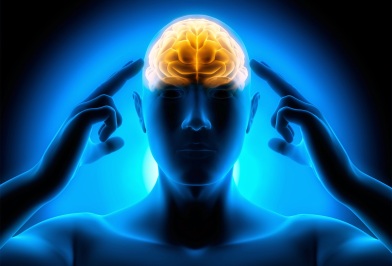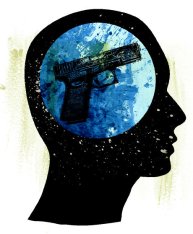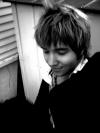

| Online: | |
| Visits: | |
| Stories: |
No One Has Ever Hated Themselves
By Adam J. Pearson

Introduction: You’ve Never Hated What You Are, Only What You Believed You Were
One of the most shocking things I ever discovered is that no one has ever hated themselves.
Really.
And trust me, I thought I did. There were periods that I thought I hated myself badly enough to want to kill myself. If you or someone you know feels like this, I hear and empathize with this feeling and I am not in any way demeaning or denying it. What I want to explore here is how we come to arrive at the experience of seeming to hate ourselves and how we can come to see things with a fresh perspective.
So, there was a time that I was convinced that I hated myself. To my surprise, however, I came to see that the idea that “I hated myself” was not a fact, but a belief. A combination of life experience, doing the work, and learning from the resesarch in psychology taught me how this process of developing a state of ‘self-loathing’ works and how we can be free from it.
The truth is that we can never hate ourselves, not as we really are. We can only hate the mental images we think we are based on the interpretations we believe about them. This is such a powerful point and causes so much of our anxiety, discontent, depression, disatisfaction, and misery that I will repeat it:
We can only hate the mental images we think we are based on the interpretations we believe about them.

A mental image is an idea or picture in the mind. For example, we may have pictures of our body, usually based on how we believe others see it, of the ‘kind of person’ we see ourselves as being, of ourselves in different roles such as a student, son, mother, wife, and so on, and ideas about our mental capacities. By comparing our mental images of ourselves with our mental images of other people, we develop interpretations of what these mental images ‘mean.’

An interpretation is a way of seeing something as having a certain meaning. Differently stated, an interpretation is a meaning given to a meaningless image; it is the interpretation that gives the meaning, not the image itself. A picture of a tree is just a picture of a tree, but if I interpret it as a symbol of growth, then I give it this meaning. We give everything all the meaning it has for us through how we interpret it. When we believe our interpretations, we see the image as actually ‘having’ or ‘holding’ them; that is, we project them onto the images. Then we mistake our interpretation for a fact, how things seem to be–that is, how we interpret and believe them to be– for how things are, and see it as if our interpretation were the only way it could be. Having given meaning to a meaningless image, we forget that we gave it this meaning and see it as having the meaning we gave it.

The Effect Of Believing The Mind’s Interpretations
When we believe the mind’s interpretations, we feel accordingly. For example, if I have an image of my body that I interpret as looking better than others’, and I believe this interpretation, I may feel vain and proud. If, however, I have a different body image, which I interpret as looking worse than others, and I believe this interpretation, then I may feel inadequate, ugly, too fat, too thin, not muscular enough, and so on. The key psychological principle to remember is this: As I believe, I perceive; as I perceive, I feel.
We are always forming images of ourselves, and adding our interpretations of them to our sense of ‘me.’ When we seem to hate ourselves, we are really hating the interpreted images that we have incorporated into our sense of self.
Our sense of self is the feeling of being ‘me’ that I experience based on all of my mental images of myself and all of the interpretations that I believe about them. It’s the feeling that flows out of all the meanings I give aspects of my body and mind. From the sense of self, my self-esteem is born (how I evaluate my own worthiness or worthlessness) as well as my sense of self-efficacy (how competent or incompentent I believe I am). Both depend on the meanings I give my images of myself, or the interpretations I believe.

The Birth of ‘Self-hatred’
What we call ‘self-hatred’ is born out of our sense of self, which is itself born out of the interpretations we believe about the images we have of ourselves.
In this way, we can come to hate images of our body, of the ‘kind of person’ we think we are because of all the ‘bad’ things we have done in the past, or of the roles we played (often badly, according to our thoughts), or of who we believe others think we are, how we imagine they think and feel about us, and so on. What are we hating in each case? Not ourselves as we really are prior to all of our mental interpreting, but our mental images of ourselves based on how we interpret and believe these images to be.
From the standpoint of evolution and biology, self-hatred sounds absolutely absurd; how can we come to hate ourselves and even be willing to override our powerful instinct to survive by committing suicide? What anchors a simple image in the mind and makes it fester into hate? Although there may be other neurological and genetic factors at play, I suggest that psychologically, this happens through three processes: identifying, interpreting, and believing.

Identification
The first is identification. Identification is taking a mental image to be ‘me.’
What we call ‘self-hatred’ starts when we identify with an image, idea, or mental picture of ourselves. When we identify it, we see it as depicting ‘who I am.’ It may only be a story, one way of seeing things, a picture from one point of view, or one interpretation, but we confuse it with a fact and then see it as ‘me,’ as ‘how I am.’ For example, we may see a distorted image of ourselves in the mirror as overweight when our body actually and factually has a healthy weight, and believe “I am fat.” Then we can hate the image of ourselves as fat based on the interpretation we gave it. The interpretation may be something like “I should be skinnier or I’m worthless.” If I believe this story that I give to the image of my body, then I feel accordingly. As I believe, I perceive; as I perceive, I feel.
Once we identify with an image, we take it to be ‘me’ and forget that the meaning we give it is just one possible interpretation of how things could be. We forget that the image is of an ever-changing form, which we innocently mistake to be unchanging (“I will always be fat,” “I will always be unlovable,” etc.). These “I will always be…” thoughts are themselves interpretations of an earlier interpretation (“I am fat” or “I am unlovable”)! In fact, they are false; a human being will never be one way forever, each has a limited lifespan through which it changes dramatically. The mind is an image and interpretation generator. When we identify with interpreted images, we feel accordingly. So, the first thing that anchors an interpreted image into a sense of self we can come to hate is our identification with it as “me.”

Interpeting and Believing
The second thing that anchors a self-image into something that can be hated is belief. We not only identify with a negative interpretation of our value and identity, but believe it to be true. When we believe it, as psychology has repeatedly shown, emotional reactions follow. We experience and see ourselves as if our belief were true. This is how biases and self-fulfilling prophecies work. As we believe, we tend to perceive.
Once you identify with a mental image, as of your body, and believe your mind’s interpretation of it, when you look in the mirror, you no longer see your body in its raw physicality, as it really is. You see your mind’s interpretation of an image of your body, which you believe to be true (“I am too fat,” “my biceps should be bigger,” “I’m disgusting,” etc.). Once you believe your interpretation of the mental image you identify with, you come to see it as ‘me’ and feel accordingly. This is how what starts as identification can come to end in loathing.

The Good News
Here’s the refreshing and revitalizing truth: you are not your stories, images, or interpretations of yourself. You are the living being that comes before all of the imaging, interpreting, and believing. And you can only hate images and interpretations of yourself. What you really are cannot be hated because it’s prior to all your images, interpretations, and beliefs. Therefore, you can never hate yourself as you really are, only as you believe, and thus perceive, yourself to be.
This is really, really good news. It means that if we suffer over what we’re believing about ourselves, then we’re not doomed. Hooray!
Why does this all mean that we’re not doomed? Because if you can only hate the interpretations you believe about yourself, then you only hate something that can be questioned and changed.

Questioning Our Beliefs: The Path to Freedom from Enslavement to Interpretation
The accuracy of all mental interpretations and mental images can be questioned; none are ever set in stone. This is a majour reason that Cognitive Behavioural Therapy, the most research-supported therapy of them all, works so well with so many types of mental illness. It helps us to question the beliefs from which our emotional reactions and behaviours flow. Working with a mental health professional who specializes in CBT can be very helpful in many cases.
There is also a simpler, less technical way to question your thoughts about yourself on your own. This method is Byron Katie’s the Work. I am not in any way affiliated with Byron Katie or her organization, but this method was a game-changer and a life-changer for me so I’ll happily share it with you. This powerful tool uses four simple questions to question any interpretation about ourselves, other people, or the world that we believe.

The Solution to the Misery of Believing Negative Interpretations
To be completely honest, there were times when I was barely able to get through the day because I was so seemingly immersed in anxiety and depression, so if you are experiencing that, I completely understand and relate. What saved me was learning to question all my interpretations, especially the ones about myself and my own value as well as the nature of the world and the people around me.
As we have seen, believing interpretations of our images of ourselves without questioning leads to suffering. It’s the main reason people end up thinking they hate themselves, other people, and the world, and feeling accordingly. Living in past mental interpretations rather than in the raw presence of sensory experience leads us to feel dead while alive. Questioning those interpretations and waking up to life as it is beyond all our stories about it returns vitality to daily experience. These are not speculative hypotheses, they are the fruits of both psychological research and what I have lived and found to be true in my own experience recovering from majour depression and anxiety.
To summarize, you have never hated yourself, only your interpretations of your images of yourself that you identified with and believed to be true. This is not just an interesting tidbit; it has great practical value for daily life. If this is the case, then you can train your mind to question your interpretations of yourself, which are only thoughts that tell a story about your mind’s pictures of the world. Questioning the thoughts that cause our feeling of hatred or loathing towards what we think we are is the solution to the problem of ‘self-hatred.’ Learning it as a skill opens up radically new and refreshing possibilities of seeing, living, thinking, and feeling that you may have never thought were possible for you. If you suffer from distressing thoughts on a daily basis, then I invite you to try to question your beliefs about yourself, others, and the world and see what happens.

How to Question Your Thoughts
If you don’t know where to start with questioning interpretations, I’d suggest that you try a simple method of asking four powerful questions (called “The Work”). These questions made an incredible difference in my own life and banished countless years of seeming heaviness and misery from believing unquestioned interpretations, as they have done for many others. Happily, there’s no need to take my word for their value; you can experiment and find out for yourself.
Here are the three simple and easy steps to this form of inquiry or questioning:
Step 1. Begin by writing down the thought that’s disturbing you about other yourself, other people, or the world, as clearly and honestly as you can. Writing down helps fix it on the page so that your mind can’t run off on a tangent or slip into some other interpretation besides the one you’re trying to question.
Step 2. Then ask of the thought:
1. Is it true?
(I invite you here to refrain from “kind of…, no, but.., in a way…, and all such other qualifying answers because they tend to get the mind lost in other interpretations while we try to focus on the one at hand. As a result, it’s best to only reply to the first two questions with a simple yes or no. If yes, move on to Question 2. If no, move on to Question 3).
2. Can I absolutely know it’s true?
(Again, answer yes or no only).
3. How do I react when I believe this thought?
(Be fully honest with yourself about how you actually feel, behave, and treat the people around you, even if it doesn’t make you “look good.” Hiding here will keep you stuck; telling yourself the full truth will set you free.)
4. Who would I be without this thought?
(Imagine yourself in this situation as clearly as you can and describe how you would act, move, treat others and so on without this belief).

Step 3. the final thought is to do what Byron Katie calls a turnaround, that is, changing the meaning of a thought to see it from a new perspective.
There are three ways to turn a thought around:
For example, if the thought is “Ashley doesn’t listen to me,” we can:
a) we can turn it around to the self. (I don’t listen to myself.)
b) we can turn it around to the other. ( I don’t listen to Ashley.)
c) we can turn it around to the opposite. (Ashley does listen to me.)
Then find at least three specific, genuine examples of how each turnaround is true for you in this situation. This is the third and final step. The Work is doing them over and over again on each and every distressing thought that arises so that we can go from believing interpretations to seeing things clearly in their absence and feeling our feeling shift accordingly.
Please note that I simply chose the name ‘Ashley’ at random for the sake of this example. If your name is Ashley, know that I do not doubt your listening skills. I know you are listening, dear Ashleys of the world!

Questioning “I” Beliefs
You may notice that with beliefs about yourself (“I” beliefs), only the turnaround to the opposite makes sense. This is because they are already oriented to the self and there is no other in the relationship that we can flip the thought around on. In this case, it helps to be very specific. Instead of saying choosing a thought that is very vague and general such as “I hate myself,” ask yourelf what exactly it is that you seem to hate about yourself (e.g. “I hate how my body looks, I hate how I hide in social situations, I hate how I lash out at others when I’m angry,” etc.).
Then question each of these in turn with the four questions, turn each around to its opposite, and find three examples of how the turnaround is as true or truer. For example, for the thought “I love how my body looks,” find three things you love about your body that you miss when you’re busy hating a few particular things as if they were all of the body.

Doing The Work
If the Work sounds like work, that’s because it is. But as it turns out, it’s also fun, liberating, and can make people burst into laughter when they find themselves on the other side of an interpretation they may have suffered over for years. At first, you will have to go through the steps manually. With time, the inquiry will go on automatically in your mind as a wonderfully liberating habit, even throughout the day.
There have been moments when I was going through the day and a thought like “I’m a failure because I’m not married.” Believing an interpretation like this could have made me feel sad, but happily, the next thought that popped up was “can you absolutely know that’s true?” And I bust into laughter! This is a very common experience among those who learn to question their thoughts. The Work is the gift that keeps on giving. “When you question your thoughts, you don’t let go of them,” Byron Katie says. “They let go of you.” This has very much been my experience as well.
In conclusion, most of our suffering is caused by what we believe. We believe interpretations of our mind’s mental images of the things in our lives from objects to other people, places, and even ourselves. When we believe these interpretations, we feel accordingly. Interpretations can be questioned. When we inquire into the truth of our interpretations, we are freed to see, feel, and see the world, ourselves, and each other, in a new way. Remember that an interpretation is a way of seeing something as having a certain meaning. If an interpretation is questioned, you cease to see it as having that meaning. This gives it the space to take on a new meaning, or even be seen as it is in the absence of all of the meanings our minds make up.

Conclusion: The Power of Questioning Thoughts
In short, questioning is both an expression of freedom and a way to experience freedom. The power to question your mind’s interpretations is your birthright. You can do it. This power is yours and no one can ever take it away from you. This is why Byron Katie was able to teach even inmates in prisons how to do it! They may be behind bars, but freedom of mind is still open to them. The same is true for you, regardless of what mental prison you may believe you are in.
If you’d like a tool for going deeper into questioning your thoughts, I invite you to check out Byron Katie’s amusingly-titled Judge Your Neighbour Worksheet. If you print it out, you can fill out a series of blanks on the page to tease the wonderfully petty, judgmental thoughts that are really disturbing you out of hiding in your mind. It’s a great tool for taking questioning and freedom further into your mind’s thought system.
Much love and respect to each and every one of you. You are far more than you believe yourself to be. These aren’t nice-sounding empty words; if you question your beliefs, you’ll come to see it for yourself directly and beyond all doubt. When a distressing interpretation pops up in your head, you won’t be helpless and hopeless; you’ll be empowered with a tool to meet it with curiosity and clarity. Happy exploring!
Read More from Adam Pearson at http://philosophadam.wordpress.com/
Source: https://philosophadam.wordpress.com/2016/09/12/no-one-has-ever-hated-themselves/



